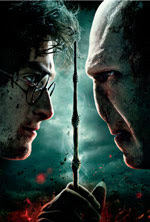The gift giving tradition practiced in Islamic courts was an expression of affection, friendship, gratitude for services rendered, piety, and, in diplomacy, formalizing alliances. This theme is the center of the international groundbreaking exhibit premiering at the Los Angeles County Museum of Art (LACMA) featuring 250 impressive works of various media, from collections in America, Europe, and the Middle East, ranging from the eighth through nineteenth centuries.
 Five years in the making, and curated by Islamic art specialist Linda Komaroff, the exhibit can be viewed in any order within the three broad sections of Personal Gifts, Pious Gifts, and State and Diplomatic Gifts that were documented or identified from textual or archival resources.
Five years in the making, and curated by Islamic art specialist Linda Komaroff, the exhibit can be viewed in any order within the three broad sections of Personal Gifts, Pious Gifts, and State and Diplomatic Gifts that were documented or identified from textual or archival resources.
 Objects of personal adornment such as jewelry, belts, garments, and precious utilitarian objects are on view in the Personal Gifts section. Included are a Pair of Bracelets from the 11th century Syria or Egypt, made of gold fabricated from sheet and decorated with wire, as well as a late 16th-17th century Turkey Comb made of rock crystal inlaid with gold and set with emeralds and rubies.
Objects of personal adornment such as jewelry, belts, garments, and precious utilitarian objects are on view in the Personal Gifts section. Included are a Pair of Bracelets from the 11th century Syria or Egypt, made of gold fabricated from sheet and decorated with wire, as well as a late 16th-17th century Turkey Comb made of rock crystal inlaid with gold and set with emeralds and rubies.
 The Pious Gifts given to mosques or shrines expressed piety and humility before God. Finest of their type, these gifts were notable for their size and expense. Preferred were the lighting gear, such as giant candles and candlesticks, for evoking God's light. On display is a glass Lamp of late 14th century Egypt or Syria. Expensive carpets were made to fit specific spaces in a particular shrine. Huge porcelains plates, and water vessels are also included.
The Pious Gifts given to mosques or shrines expressed piety and humility before God. Finest of their type, these gifts were notable for their size and expense. Preferred were the lighting gear, such as giant candles and candlesticks, for evoking God's light. On display is a glass Lamp of late 14th century Egypt or Syria. Expensive carpets were made to fit specific spaces in a particular shrine. Huge porcelains plates, and water vessels are also included.
 State and Diplomatic Gifts were used in formalizing alliances, sealing peace treaties, and included courtly regalia such as jewel-encrusted horse trappings and robes of honor. On view is a Portrait of Fath Ali Shah, Iran, Tehran, c. 1800-1806; Timur Receiving Gifts from the Egyptian Ambassadors, a double-page composition from a manuscript of the Zafarnama of Sharaf al-Din Ali Yazdi, Iran, Shiraz, 1436, as well as Sindukht Comes to Sam Bearing Gifts, folio from the Shahnama of Shah Tahmasp, Iran, Tabriz, 1525-35. Also on display is the Presentation of Gifts by the Safavid Ambassador to Selim II at Edirne, double-page painting from the Sehname-i Selim Han, Turkey, 1591, Shah Jahan Receives the Persian Ambassador, Muhammad Ali Beg folio from the Windsor Padshahnama, India, c. 1633, and a Rosette, from the Mshatta Facade, Mshatta (Modern Jordan) 8th century.
State and Diplomatic Gifts were used in formalizing alliances, sealing peace treaties, and included courtly regalia such as jewel-encrusted horse trappings and robes of honor. On view is a Portrait of Fath Ali Shah, Iran, Tehran, c. 1800-1806; Timur Receiving Gifts from the Egyptian Ambassadors, a double-page composition from a manuscript of the Zafarnama of Sharaf al-Din Ali Yazdi, Iran, Shiraz, 1436, as well as Sindukht Comes to Sam Bearing Gifts, folio from the Shahnama of Shah Tahmasp, Iran, Tabriz, 1525-35. Also on display is the Presentation of Gifts by the Safavid Ambassador to Selim II at Edirne, double-page painting from the Sehname-i Selim Han, Turkey, 1591, Shah Jahan Receives the Persian Ambassador, Muhammad Ali Beg folio from the Windsor Padshahnama, India, c. 1633, and a Rosette, from the Mshatta Facade, Mshatta (Modern Jordan) 8th century.

All these magnificent gifts of historical significance share in common elite objects with rare and expensive materials made by the best artists. Communication through gift giving and receiving provided an artistic framework for cross cultural exchange and interaction.
A small contemporary component is included in the exhibition, displaying the work of innovative artists with Islamic roots, Sadegh Tirafkan, Shahzia Sikander, and Ahmed Mater, commissioned to produce new works interpreting the theme of Gifts of the Sultan.
The exhibit runs from June 5, 2011 through September 5, 2011 at the Los Angeles County Museum of Art (LACMA) Lynda and Stewart Resnick Exhibition Pavilion, located at 5905 Wilshire Boulevard, Los Angeles, CA 90036. For more information call (323) 857-6000 or visit www.lacma.org
Following its presentation at LACMA, the exhibit travels to the Museum of Fine Arts in Huston October 23, 2011 - January 15, 2012, and the Museum of Islamic Art in Doha, Qatar, Spring 2012.




















































